Sidusglacies - ⚡️

More Posts from Sidusglacies and Others

Comet Lovejoy by Simon W

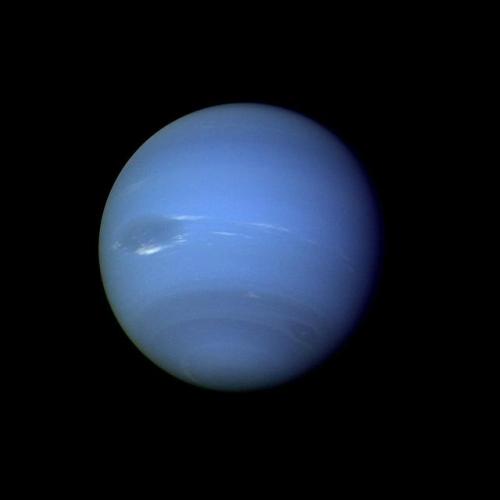
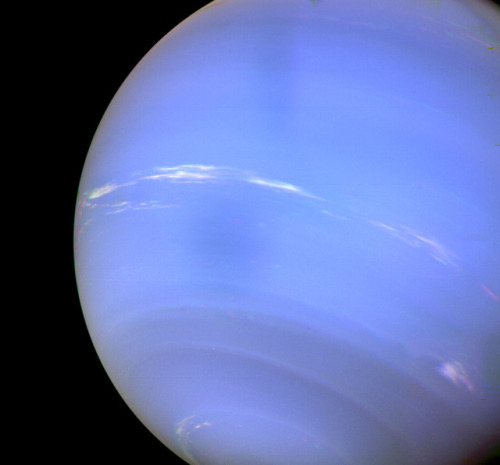
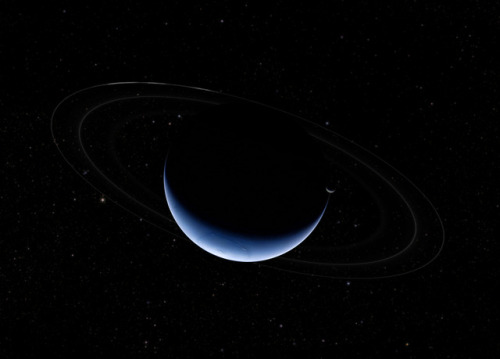
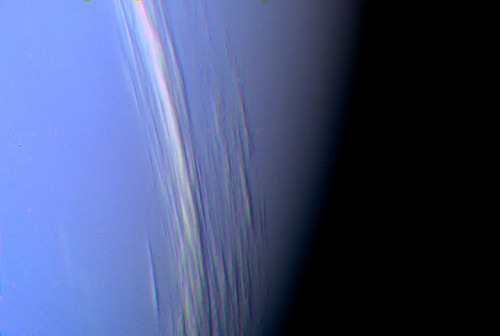

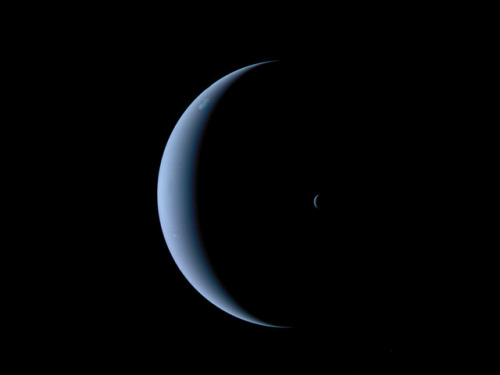
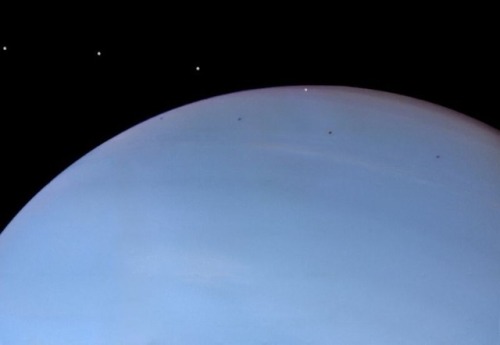

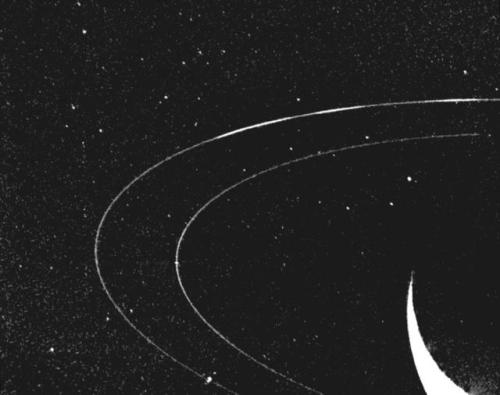
Neptune ♆
On this day in 1846 was discovered the planet Neptune.
The ice giant Neptune was the first planet located through mathematical predictions rather than through regular observations of the sky. (Galileo had recorded it as a fixed star during observations with his small telescope in 1612 and 1613.) When Uranus didn’t travel exactly as astronomers expected it to, a French mathematician, Urbain Joseph Le Verrier, proposed the position and mass of another as yet unknown planet that could cause the observed changes to Uranus’ orbit. After being ignored by French astronomers, Le Verrier sent his predictions to Johann Gottfried Galle at the Berlin Observatory, who found Neptune on his first night of searching in 1846. Seventeen days later, its largest moon, Triton, was also discovered.
Neptune is invisible to the naked eye because of its extreme distance from Earth. Interestingly, the highly eccentric orbit of the dwarf planet Pluto brings Pluto inside Neptune’s orbit for a 20-year period out of every 248 Earth years. Pluto can never crash into Neptune, though, because for every three laps Neptune takes around the Sun, Pluto makes two. This repeating pattern prevents close approaches of the two bodies.
Nearly 4.5 billion kilometers (2.8 billion miles) from the Sun, Neptune orbits the Sun once every 165 years.
Uranus’ blue-green color is also the result of atmospheric methane, but Neptune is a more vivid, brighter blue, so there must be an unknown component that causes the more intense color.
Despite its great distance and low energy input from the Sun, Neptune’s winds can be three times stronger than Jupiter’s and nine times stronger than Earth’s.
Winds on Neptune travel faster than the speed of sound.
In 1989, Voyager 2 tracked a large, oval-shaped, dark storm in Neptune’s southern hemisphere. This “Great Dark Spot” was large enough to contain the entire Earth.
Neptune has five known rings. Voyager 2’s observations confirmed that these unusual rings are not uniform but have four thick regions (clumps of dust) called arcs. The rings are thought to be relatively young and short-lived.
Neptune has 14 known moons, six of which were discovered by Voyager 2.
Triton, Neptune’s largest moon, orbits the planet in the opposite direction compared with the rest of the moons, suggesting that it may have been captured by Neptune in the distant past.
To know more about the planet Neptune click here and here.
Images credit: NASA/JPL- Caltech (some images processed by Kevin M. Gill)

The clearest photo ever taken of Saturn

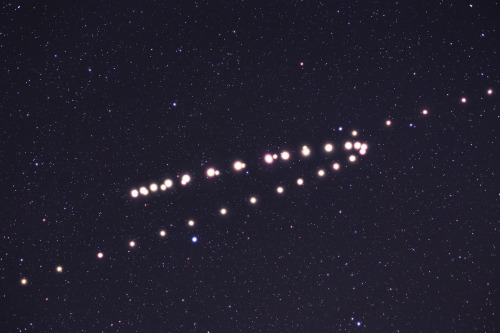
Retrograde motion of Mars in the night sky of the Earth.
Image Credit: Tunc Tezel



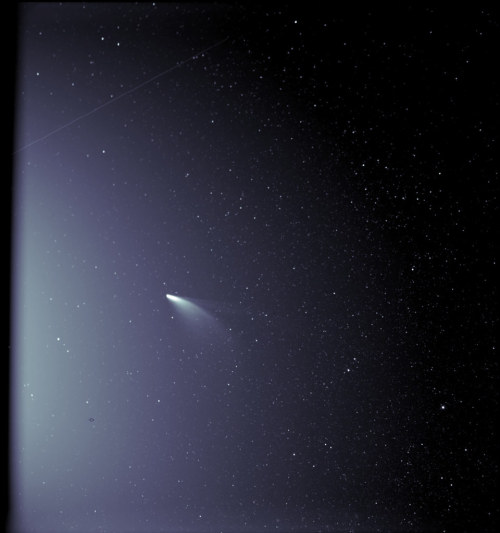
NASA’s Parker Solar Probe Spies Newly-Discovered Comet NEOWISE


every charred tree stump i passed looked like a bleeding heart – a repost of the original, which had some details i wasn’t happy with.

AI USED TO SHOW HOW HYDROGEN BECOMES A METAL INSIDE GIANT PLANETS
Researchers have used a combination of AI and quantum mechanics to reveal how hydrogen gradually turns into a metal in giant planets.
Dense metallic hydrogen – a phase of hydrogen which behaves like an electrical conductor – makes up the interior of giant planets, but it is difficult to study and poorly understood. By combining artificial intelligence and quantum mechanics, researchers have found how hydrogen becomes a metal under the extreme pressure conditions of these planets.
The researchers, from the University of Cambridge, IBM Research and EPFL, used machine learning to mimic the interactions between hydrogen atoms in order to overcome the size and timescale limitations of even the most powerful supercomputers. They found that instead of happening as a sudden, or first-order, transition, the hydrogen changes in a smooth and gradual way. The results are reported in the journal Nature.
Hydrogen, consisting of one proton and one electron, is both the simplest and the most abundant element in the universe. It is the dominant component of the interior of the giant planets in our solar system – Jupiter, Saturn, Uranus, and Neptune – as well as exoplanets orbiting other stars.
At the surfaces of giant planets, hydrogen remains a molecular gas. Moving deeper into the interiors of giant planets however, the pressure exceeds millions of standard atmospheres. Under this extreme compression, hydrogen undergoes a phase transition: the covalent bonds inside hydrogen molecules break, and the gas becomes a metal that conducts electricity.
“The existence of metallic hydrogen was theorised a century ago, but what we haven’t known is how this process occurs, due to the difficulties in recreating the extreme pressure conditions of the interior of a giant planet in a laboratory setting, and the enormous complexities of predicting the behaviour of large hydrogen systems,” said lead author Dr. Bingqing Cheng from Cambridge’s Cavendish Laboratory.
Experimentalists have attempted to investigate dense hydrogen using a diamond anvil cell, in which two diamonds apply high pressure to a confined sample. Although diamond is the hardest substance on Earth, the device will fail under extreme pressure and high temperatures, especially when in contact with hydrogen, contrary to the claim that a diamond is forever. This makes the experiments both difficult and expensive.
Theoretical studies are also challenging: although the motion of hydrogen atoms can be solved using equations based on quantum mechanics, the computational power needed to calculate the behaviour of systems with more than a few thousand atoms for longer than a few nanoseconds exceeds the capability of the world’s largest and fastest supercomputers.
It is commonly assumed that the transition of dense hydrogen is first-order, which is accompanied by abrupt changes in all physical properties. A common example of a first-order phase transition is boiling liquid water: once the liquid becomes a vapour, its appearance and behaviour completely change despite the fact that the temperature and the pressure remain the same.
In the current theoretical study, Cheng and her colleagues used machine learning to mimic the interactions between hydrogen atoms, in order to overcome limitations of direct quantum mechanical calculations.
“We reached a surprising conclusion and found evidence for a continuous molecular to atomic transition in the dense hydrogen fluid, instead of a first-order one,” said Cheng, who is also a Junior Research Fellow at Trinity College.
The transition is smooth because the associated ‘critical point’ is hidden. Critical points are ubiquitous in all phase transitions between fluids: all substances that can exist in two phases have critical points. A system with an exposed critical point, such as the one for vapour and liquid water, has clearly distinct phases. However, the dense hydrogen fluid, with the hidden critical point, can transform gradually and continuously between the molecular and the atomic phases. Furthermore, this hidden critical point also induces other unusual phenomena, including density and heat capacity maxima.
The finding about the continuous transition provides a new way of interpreting the contradicting body of experiments on dense hydrogen. It also implies a smooth transition between insulating and metallic layers in giant gas planets. The study would not be possible without combining machine learning, quantum mechanics, and statistical mechanics. Without any doubt, this approach will uncover more physical insights about hydrogen systems in the future. As the next step, the researchers aim to answer the many open questions concerning the solid phase diagram of dense hydrogen.
-
 1630vvintagee reblogged this · 3 years ago
1630vvintagee reblogged this · 3 years ago -
 mar-esias reblogged this · 3 years ago
mar-esias reblogged this · 3 years ago -
 allnaturalbeautylover liked this · 3 years ago
allnaturalbeautylover liked this · 3 years ago -
 mzyoyo697 liked this · 3 years ago
mzyoyo697 liked this · 3 years ago -
 gnarlymovie reblogged this · 3 years ago
gnarlymovie reblogged this · 3 years ago -
 bizzyj1 liked this · 3 years ago
bizzyj1 liked this · 3 years ago -
 eidola-eidola liked this · 3 years ago
eidola-eidola liked this · 3 years ago -
 sidusglacies reblogged this · 4 years ago
sidusglacies reblogged this · 4 years ago -
 itsmerob liked this · 4 years ago
itsmerob liked this · 4 years ago -
 wj630824 liked this · 4 years ago
wj630824 liked this · 4 years ago -
 bwwhitney liked this · 5 years ago
bwwhitney liked this · 5 years ago -
 eze77nqnsur liked this · 5 years ago
eze77nqnsur liked this · 5 years ago -
 aliveli34kk liked this · 5 years ago
aliveli34kk liked this · 5 years ago -
 lukaslussi88 liked this · 5 years ago
lukaslussi88 liked this · 5 years ago -
 coolbluemoonus reblogged this · 5 years ago
coolbluemoonus reblogged this · 5 years ago -
 coolbluemoonus liked this · 5 years ago
coolbluemoonus liked this · 5 years ago -
 amicablyaloof reblogged this · 5 years ago
amicablyaloof reblogged this · 5 years ago -
 glassynights liked this · 5 years ago
glassynights liked this · 5 years ago -
 wowalimanezawega liked this · 5 years ago
wowalimanezawega liked this · 5 years ago -
 kindname reblogged this · 5 years ago
kindname reblogged this · 5 years ago -
 nebulouslee liked this · 5 years ago
nebulouslee liked this · 5 years ago -
 ajtumbles2020 liked this · 5 years ago
ajtumbles2020 liked this · 5 years ago -
 godjp liked this · 5 years ago
godjp liked this · 5 years ago -
 ya-cali liked this · 5 years ago
ya-cali liked this · 5 years ago -
 conchetumarehmnown reblogged this · 5 years ago
conchetumarehmnown reblogged this · 5 years ago -
 marrumeu liked this · 5 years ago
marrumeu liked this · 5 years ago -
 somethingkindaart liked this · 5 years ago
somethingkindaart liked this · 5 years ago -
 a-tiny-wizard liked this · 5 years ago
a-tiny-wizard liked this · 5 years ago -
 brandonwasonceawumboking liked this · 5 years ago
brandonwasonceawumboking liked this · 5 years ago -
 mysterysciencegirlfriend3000 reblogged this · 5 years ago
mysterysciencegirlfriend3000 reblogged this · 5 years ago -
 megabongo liked this · 5 years ago
megabongo liked this · 5 years ago -
 bikofan liked this · 5 years ago
bikofan liked this · 5 years ago -
 bikerlovertexas liked this · 5 years ago
bikerlovertexas liked this · 5 years ago -
 lightningboltlife liked this · 5 years ago
lightningboltlife liked this · 5 years ago -
 breathingspells liked this · 5 years ago
breathingspells liked this · 5 years ago
